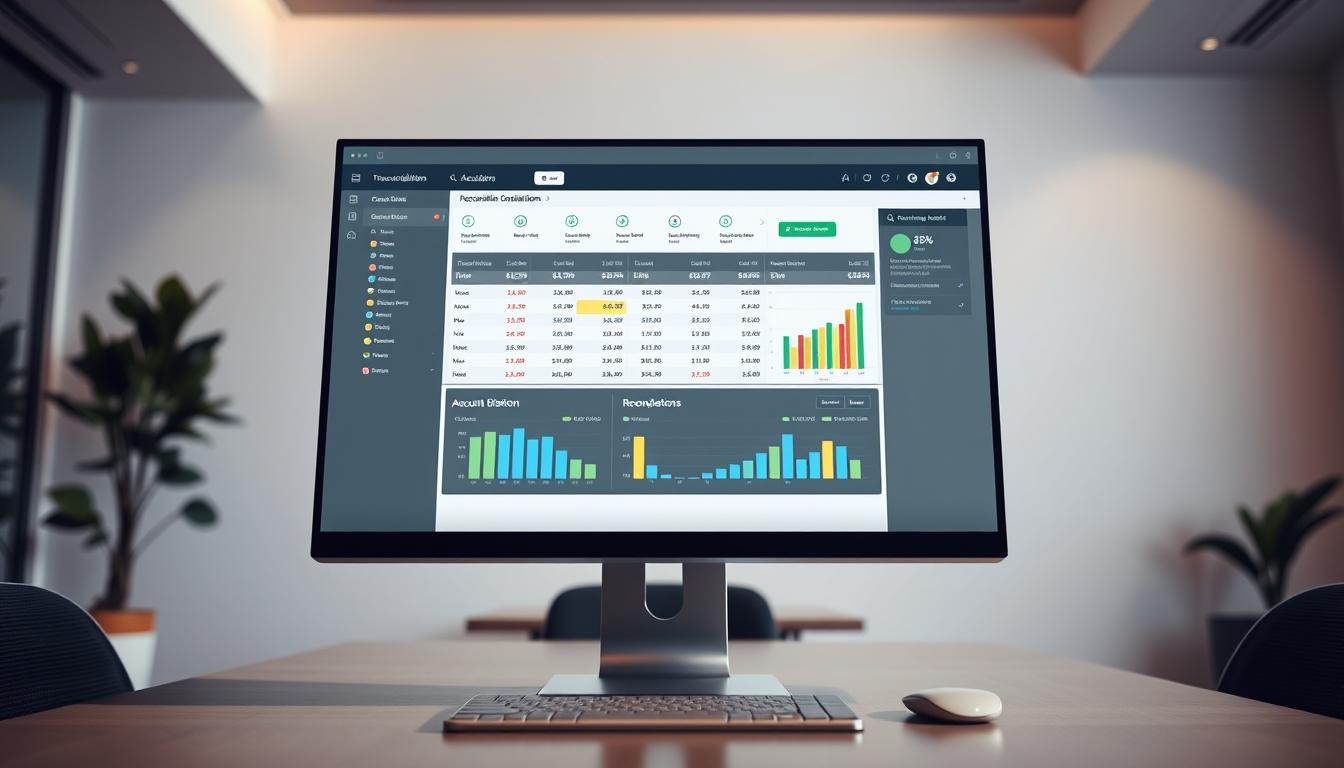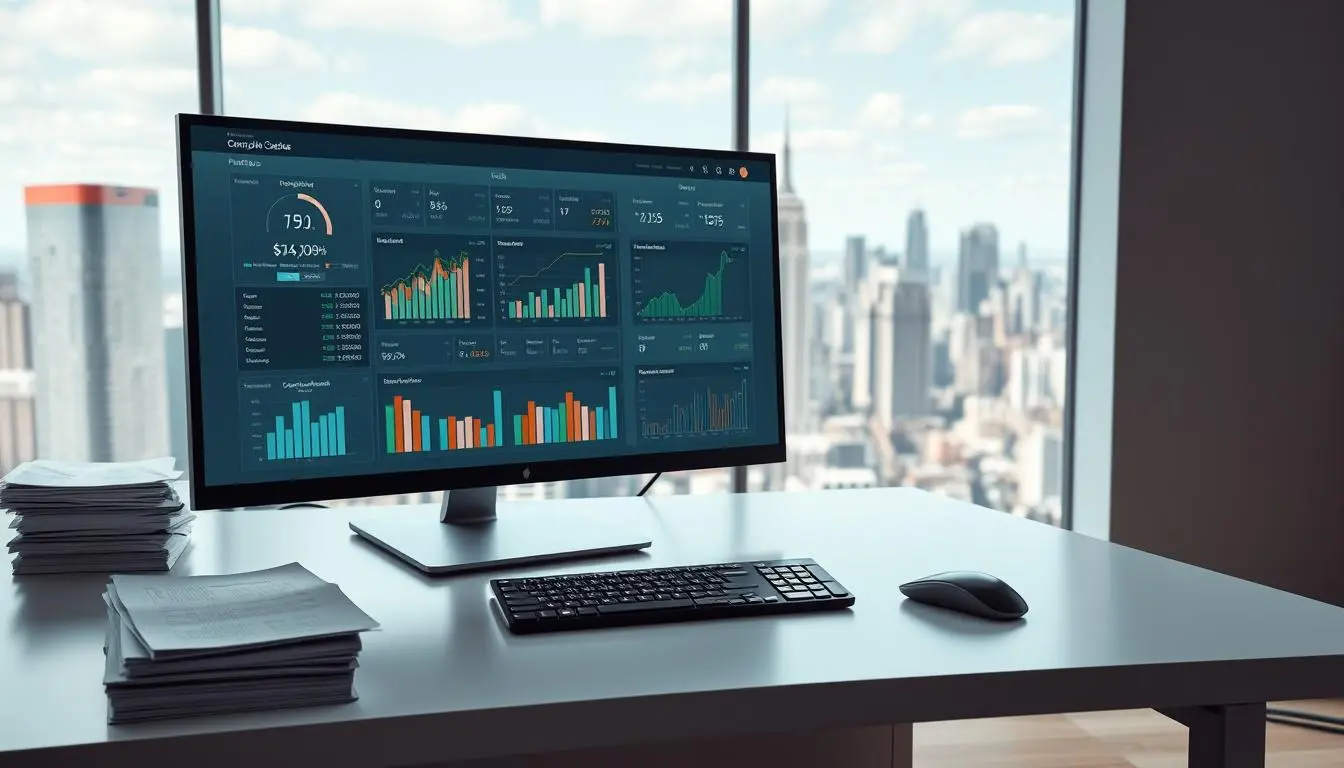Why Software for Bank Reconciliation Is a Must for Modern Finance
In today’s digital-first world, finance teams are managing more transactions than ever. Manual reconciliation, which once worked fine for smaller businesses, is now a bottleneck for efficiency, accuracy, and growth. That’s where bank reconciliation software steps in. It’s not just a convenience tool anymore but a necessity for any modern business aiming for transparency, control, and real-time financial insights.

This blog explores why software for bank reconciliation has become essential in modern finance, how it works, and how it transforms financial operations for businesses of all sizes.
What Is Bank Reconciliation and Why It Matters
Bank reconciliation is the process of matching your company’s financial records with the transactions listed in your bank statements. It ensures that the money leaving an account matches the actual money spent and helps identify discrepancies like missed entries, duplicate transactions, or fraud.
Traditionally, this process was manual. Accountants would compare spreadsheets, statements, and receipts line by line. While this might have worked a decade ago, modern finance teams deal with hundreds or thousands of daily transactions across multiple accounts and payment channels. Manual methods simply can’t keep up anymore.
That’s why automated bank reconciliation software is now a vital part of a company’s financial management system. It eliminates manual errors, accelerates closing cycles, and provides unmatched visibility into financial health.
The Challenges of Manual Reconciliation
Let’s first understand why businesses are shifting away from manual reconciliation:
1. Time-Consuming Process
Manual reconciliation requires accountants to spend hours (or even days) comparing bank statements with internal ledgers. For large organizations, this can turn into a full-time task that drains productivity.
2. High Error Rate
Even the most skilled accountants can make mistakes when manually matching thousands of entries. A single incorrect entry can lead to reporting issues, compliance risks, or even financial losses.
3. Lack of Real-Time Insights
Manual reconciliation often happens monthly or quarterly. This delay makes it hard for businesses to have a clear real-time view of their cash position, which impacts decision-making.
4. Difficulty in Detecting Fraud or Irregularities
When reconciliation isn’t automated, irregular transactions can go unnoticed for weeks or months. This increases the risk of fraud and makes audits more complex.
5. Scalability Issues
As companies grow, so does the volume of transactions. Manual processes can’t scale efficiently, leading to delays and poor financial control.
How Bank Reconciliation Software Solves These Problems
The shift toward automation in finance isn’t just about convenience; it’s about accuracy, efficiency, and strategic advantage. Bank reconciliation software addresses all the major challenges faced by finance teams today.
1. Automated Data Matching
The software automatically matches transactions between bank statements and accounting records using predefined rules and AI-based algorithms. It flags mismatches instantly, so finance teams can investigate without manual searching.
2. Integration with Financial Systems
Most modern reconciliation tools integrate seamlessly with ERP systems, accounting software, payment gateways, and banks. This ensures all data flows automatically, eliminating manual data entry and duplication.
3. Real-Time Monitoring
Instead of waiting until month-end, automated reconciliation allows continuous tracking of transactions. This provides real-time visibility into cash balances, inflows, and outflows.
4. Error Reduction and Improved Accuracy
Automation significantly reduces human error. By relying on data-driven matching and smart rules, reconciliation software ensures transactions are accurate, complete, and verified.
5. Audit-Ready Records
All reconciliations are stored digitally with detailed audit trails. This helps auditors access complete records quickly, simplifying compliance and regulatory reviews.
6. Fraud Detection and Risk Control
The system flags unusual or duplicate transactions automatically, helping finance teams detect fraud or errors early.
The Business Benefits of Bank Reconciliation Software
1. Faster Month-End Close
Reconciliation software automates repetitive tasks, enabling finance teams to close books in days instead of weeks. This improves overall financial reporting speed.
2. Improved Financial Accuracy
Accurate reconciliations mean more reliable financial statements. Businesses can trust their cash flow data, balance sheets, and income statements.
3. Enhanced Cash Flow Management
With real-time updates, companies always know their available cash position. This helps with better liquidity management and financial planning.
4. Reduced Operational Costs
Automation reduces the need for manual labor and minimizes rework caused by human errors. Over time, this results in significant cost savings.
5. Better Compliance and Governance
With every transaction recorded and verified automatically, organizations can meet compliance requirements effortlessly. This is especially critical for regulated industries like banking, finance, and insurance.
6. Data-Driven Decision Making
Since the software provides real-time analytics, CFOs and finance leaders can make informed strategic decisions backed by accurate data.
Why Software for Bank Reconciliation Is Essential in Modern Finance
The financial landscape today is fast, interconnected, and data-driven. Businesses can’t afford delays or inaccuracies in their financial reporting. Bank reconciliation software enables finance teams to stay agile, compliant, and efficient.
Here’s why it’s indispensable:
1. Supports Digital Transformation Goals
As companies move toward digital finance, reconciliation automation is a core step. It aligns with broader goals like process automation, data integration, and analytics-driven insights.
2. Ensures Financial Transparency
Automated reconciliation ensures every transaction is tracked, matched, and verified. This creates full transparency, which investors, auditors, and management value.
3. Improves Team Productivity
Instead of spending hours on manual matching, accountants can focus on higher-value work like financial analysis, forecasting, and strategy.
4. Scales with Business Growth
Whether you process 500 or 50,000 transactions a day, reconciliation software adapts easily. It grows with your business without needing extra manpower.
5. Minimizes Fraud Risks
By continuously monitoring transactions and detecting anomalies, the software acts as a safeguard against financial irregularities and fraud.
6. Facilitates Smooth Audits
With digital trails and detailed reports, audits become faster and more transparent. This reduces stress during audit seasons and enhances credibility with regulators.
Key Features to Look for in a Bank Reconciliation Software
When choosing a bank reconciliation software, businesses should look for features that ensure automation, integration, and reliability. Some must-have features include:
- Multi-Account and Multi-Currency Support – Essential for global companies managing multiple bank accounts in different currencies.
- Automatic Import of Bank Statements – The software should automatically fetch statements from banks to save time and reduce manual entry.
- Customizable Matching Rules – Allows finance teams to define specific matching criteria based on their business needs.
- Exception Handling and Reporting – Unmatched or suspicious transactions should be flagged automatically for quick review.
- ERP and Accounting Software Integration – Ensures seamless data flow between systems like SAP, QuickBooks, Xero, or NetSuite.
- Data Security and Compliance – The platform must comply with data protection laws and offer robust encryption to keep financial data safe.
- Dashboard and Analytics – Real-time dashboards with visual insights help finance teams track reconciliation progress and cash positions at a glance.
Industries That Benefit the Most from Bank Reconciliation Software
Bank reconciliation software isn’t limited to large enterprises. It benefits a wide range of industries that handle high transaction volumes or deal with complex financial operations.
1. Banking and Financial Services
Banks use reconciliation software to verify daily transactions, detect mismatches instantly, and ensure compliance with regulatory standards.
2. E-Commerce
Online retailers often deal with multiple payment gateways, refunds, and chargebacks. Reconciliation software simplifies these processes and ensures accurate revenue tracking.
3. Retail and FMCG
These businesses handle large volumes of daily sales. Automated reconciliation ensures their sales, inventory, and cash flow remain aligned.
4. Gaming and Entertainment
With microtransactions and multiple payment platforms, these industries need automation to track revenues precisely.
5. Insurance and Fintech
Insurance companies and fintech platforms handle millions of transactions monthly. Reconciliation software provides them with real-time control and transparency.
How Kosh.ai Simplifies Bank Reconciliation
One of the leading tools in this space is Kosh.ai, a modern reconciliation software built for speed, accuracy, and automation.
Kosh.ai automates the reconciliation process in under 60 seconds by connecting directly with your internal and external data sources. It integrates with ERP systems, bank statements, and payment gateways to match transactions at a granular level.
With real-time analytics, error detection, and secure infrastructure, Kosh.ai helps businesses reduce manual effort and gain full visibility into their financial operations. Whether you are a growing startup or an enterprise, Kosh.ai ensures your reconciliation process is accurate, compliant, and efficient.
Also Read: How to Set Up an Automated Reconciliation System for Finance Teams
The Future of Bank Reconciliation
As finance becomes increasingly data-driven, automation will no longer be optional. Artificial intelligence, machine learning, and predictive analytics will make reconciliation even smarter.
Future systems will not just match transactions but predict mismatches, detect potential fraud patterns, and suggest corrective actions automatically. Cloud-based platforms will enable global teams to collaborate seamlessly on financial reconciliations in real-time.
Businesses that embrace reconciliation software today will be better positioned to adapt to these future innovations.
Final Thoughts
In modern finance, bank reconciliation software is more than a tool—it’s a foundation for accuracy, control, and trust. It eliminates errors, saves time, ensures compliance, and gives finance leaders the real-time insights they need to make confident decisions.
Whether your business handles hundreds or thousands of transactions daily, automation is the key to staying efficient and competitive. Investing in a reliable reconciliation solution like Kosh.ai will not only simplify your financial operations but also future-proof your organization against growing data complexity.
Also Read: Top Automated Bank Reconciliation Software for Marketplaces and Retail
Frequently Asked Questions
1. What is bank reconciliation software?
Bank reconciliation software automates the process of matching a company’s financial records with bank statements to identify discrepancies and ensure accuracy.
2. Why is bank reconciliation important for businesses?
It ensures accurate financial reporting, prevents fraud, and helps businesses understand their true cash position.
3. How does reconciliation software save time?
By automatically matching transactions and identifying exceptions, it reduces the need for manual entry and review.
4. Can small businesses use reconciliation software?
Yes, small businesses benefit greatly from automation. It saves time, improves accuracy, and supports growth without adding extra staff.
5. Is reconciliation software secure?
Most modern tools use encryption and comply with international data protection standards to ensure financial data remains safe.
6. How does Kosh.ai help with reconciliation?
Kosh.ai connects directly with your bank accounts, ERPs, and payment gateways to automate transaction matching in under 60 seconds, offering accuracy and real-time visibility.
Contact us now









